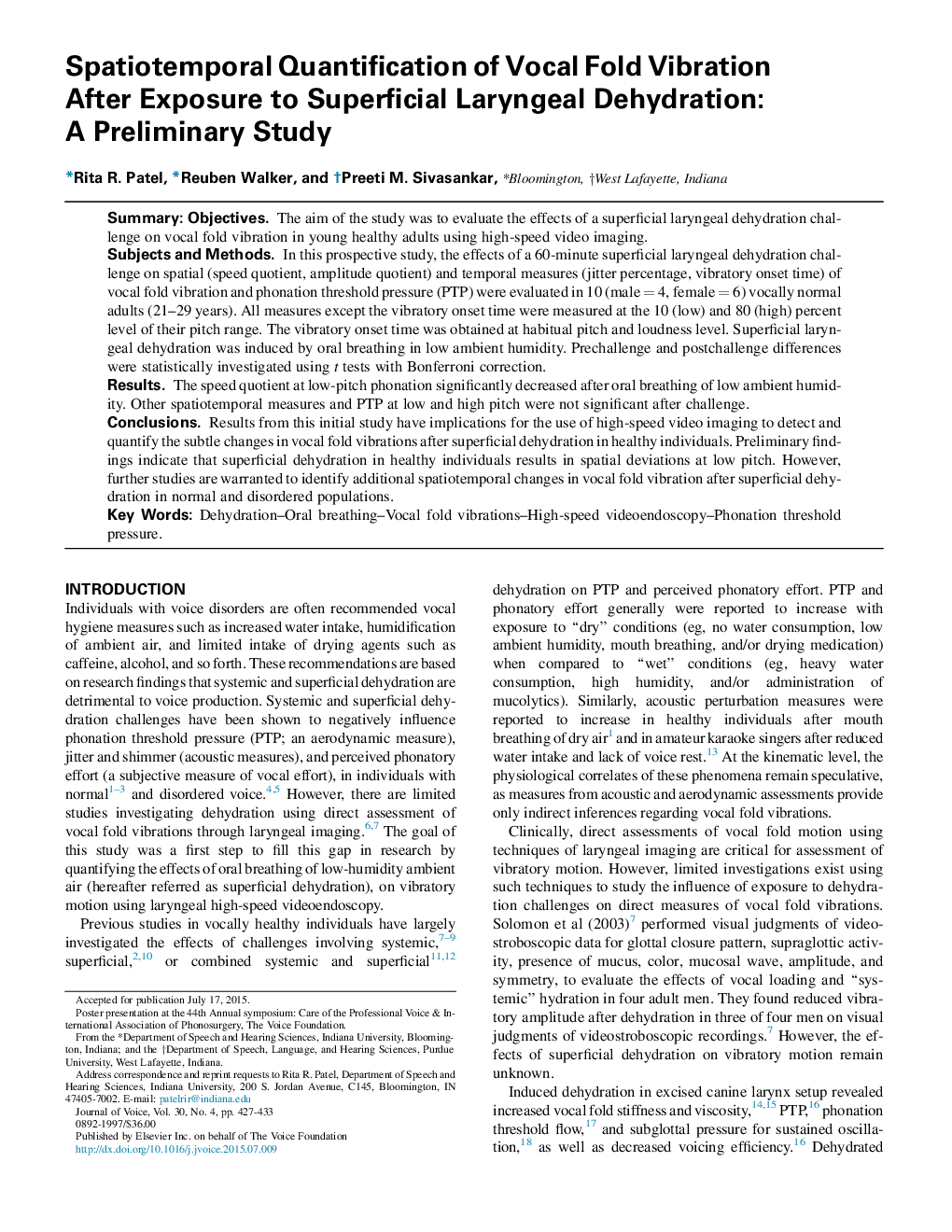| Article ID | Journal | Published Year | Pages | File Type |
|---|---|---|---|---|
| 1101215 | Journal of Voice | 2016 | 7 Pages |
SummaryObjectivesThe aim of the study was to evaluate the effects of a superficial laryngeal dehydration challenge on vocal fold vibration in young healthy adults using high-speed video imaging.Subjects and MethodsIn this prospective study, the effects of a 60-minute superficial laryngeal dehydration challenge on spatial (speed quotient, amplitude quotient) and temporal measures (jitter percentage, vibratory onset time) of vocal fold vibration and phonation threshold pressure (PTP) were evaluated in 10 (male = 4, female = 6) vocally normal adults (21–29 years). All measures except the vibratory onset time were measured at the 10 (low) and 80 (high) percent level of their pitch range. The vibratory onset time was obtained at habitual pitch and loudness level. Superficial laryngeal dehydration was induced by oral breathing in low ambient humidity. Prechallenge and postchallenge differences were statistically investigated using t tests with Bonferroni correction.ResultsThe speed quotient at low-pitch phonation significantly decreased after oral breathing of low ambient humidity. Other spatiotemporal measures and PTP at low and high pitch were not significant after challenge.ConclusionsResults from this initial study have implications for the use of high-speed video imaging to detect and quantify the subtle changes in vocal fold vibrations after superficial dehydration in healthy individuals. Preliminary findings indicate that superficial dehydration in healthy individuals results in spatial deviations at low pitch. However, further studies are warranted to identify additional spatiotemporal changes in vocal fold vibration after superficial dehydration in normal and disordered populations.
